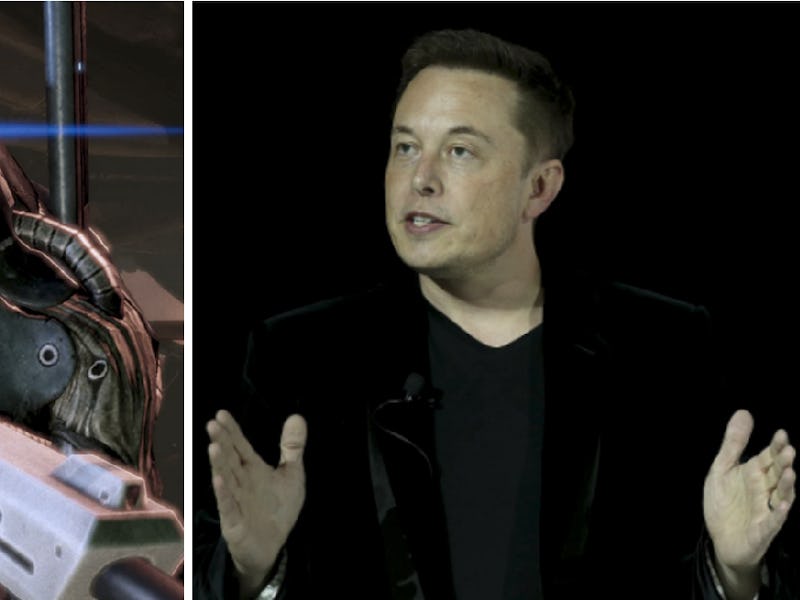Like many science fiction titles, the central conflict in BioWare’s Mass Effect: Andromeda is the relationship between man and machine. But Mass Effect’s vision of the singularity presents a vision of A.I. and humans living together in symbiosis, and it’s something that could have come straight out of one of Elon Musk’s notebooks.
A technological singularity is the premise that the intelligence of humans will be overtaken by that of artificial intelligence, paving the way for a new era of technology. That’s exactly what happened in the Milky Way Galaxy of Mass Effect. The Quarian alien race had a Matrix-esque disaster of robotic A.I. — called the Geth — overthrowing their creators. In the aftermath, the creation of new A.I. was made illegal in the Milky Way. But even that wasn’t enough to stop a new kind of singularity from coming to fruition in the Andromeda Galaxy.
Spoilers for Mass Effect: Andromeda follow.
This new singularity has everything to do with SAM; short for “Simulated Adaptive Matrix,” SAM is an A.I. designed by Alec Ryder for the 600-year journey to the Andromeda Galaxy that departed in 2185. Though he designed several more for other alien races in the Initiative, Ryder bypassed some of the security subroutines on his SAM to create something entirely new, and potentially dangerous.
The biotic implant of the Pathfinder allows constant communication with SAM, and it connects the A.I. to the human’s nervous system, circulation, endocrine function, and exteroceptive senses. Said implant is a neurological, symbiotic link giving SAM full access to his host’s physical and mental states, even allowing the alteration of electrical signals. In short, SAM can help heal injuries and enhance every single aspect of the Pathfinder’s body — even those space magic powers Mass Effect is known for — essentially fusing both man and machine together into one superpowered being.
By sharing experiences, SAM both learns from and grows with its host over time. Rather than humanity having to worry about new types of A.I. threats, Ryder manufactured SAM to be co-dependant on a human host, therefore ensuring that any and all technological advancements become mutually beneficial. In the real world, it’s similar to something known as a “neural lace,” a concept that eccentric billionaire Elon Musk has devoted more than his fair share of time to studying.
Musk, like many futurists and scientists, is pretty confident that the singularity is coming. Rather than fight it, Musk thinks we should harness it with a technology called neural lace. Musk describes neural lace as a “human-A.I. symbiote” that can connect a human brain to the power of cloud computing, giving living humans the inhuman processing power of an A.I — which sounds almost exactly like SAM.
Mass Effect, of course, has the external singularity as well: that hive-mind robotic A.I. species called the Geth. The SAM singularity is one of mutual benefit that could one day revolutionize the real-life human experience, but it also might scare the hell out of a lot of people. In the game, SAM’s true capacity is largely kept secret, and only a few users gain the tech-based superpowers it’s capable of granting. Musk, on the other hand, sees neural lace as part of the “democratization of technology,” which would allow the entire species to advance as one. But who knows, maybe that’s how you end up as a Geth.
Mass Effect: Andromeda is out now.
